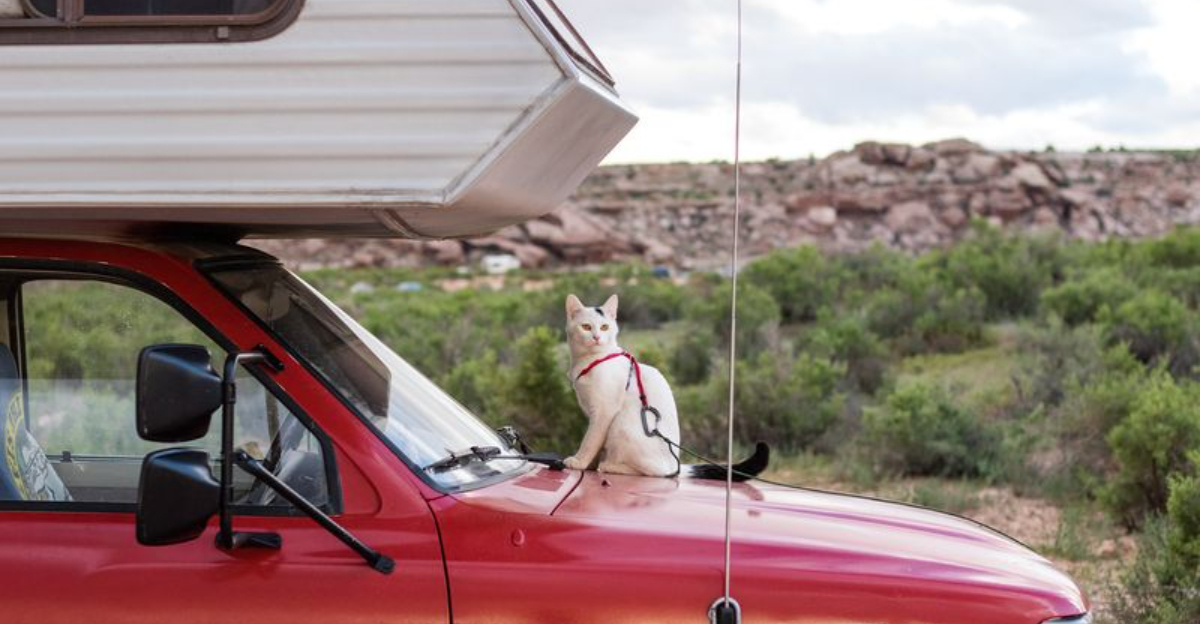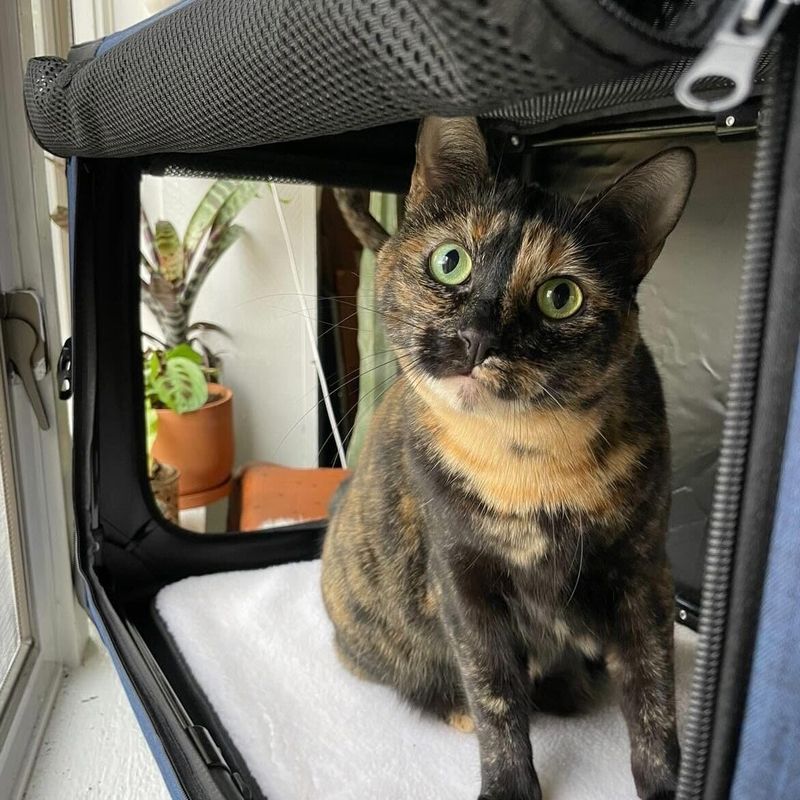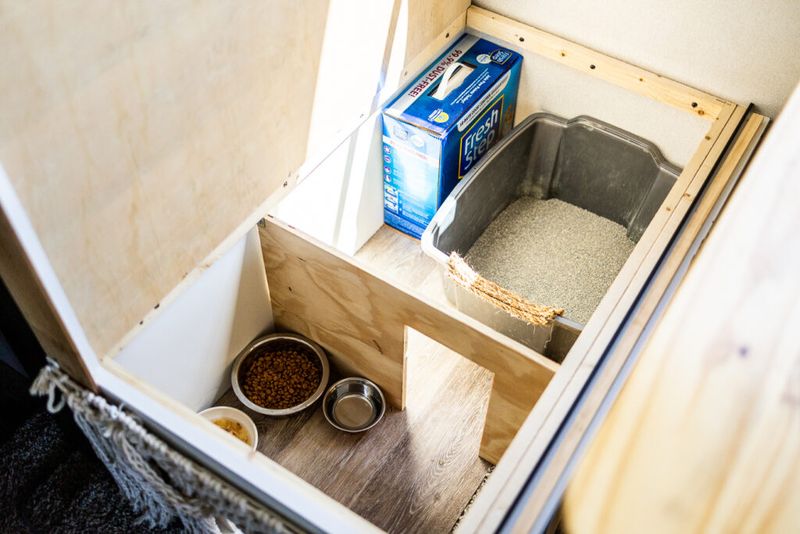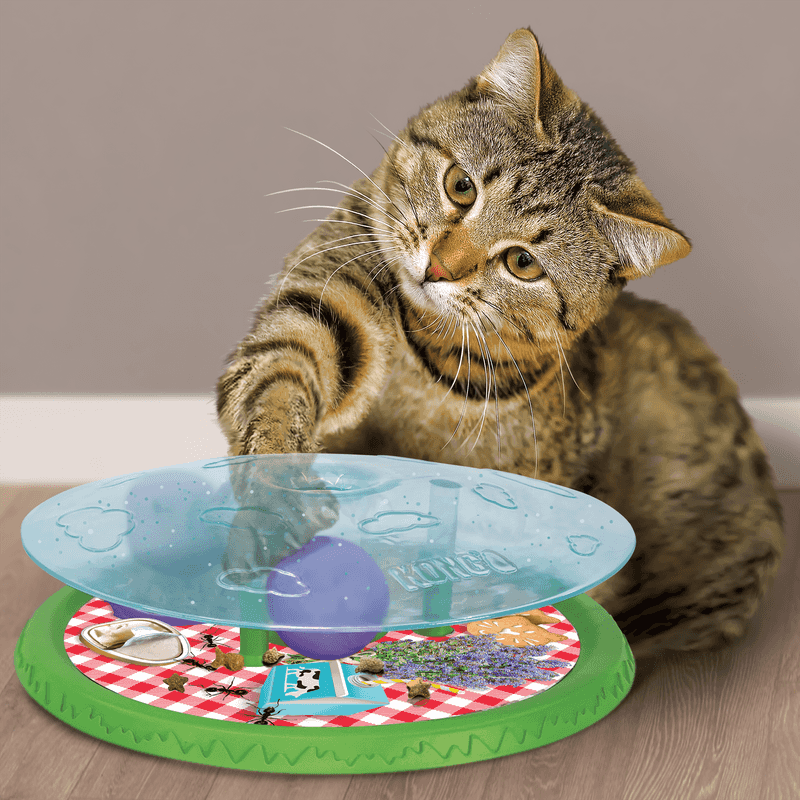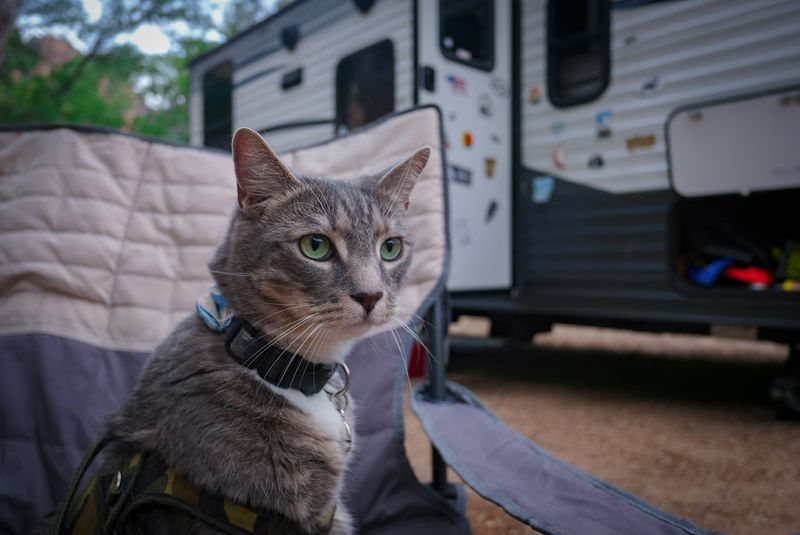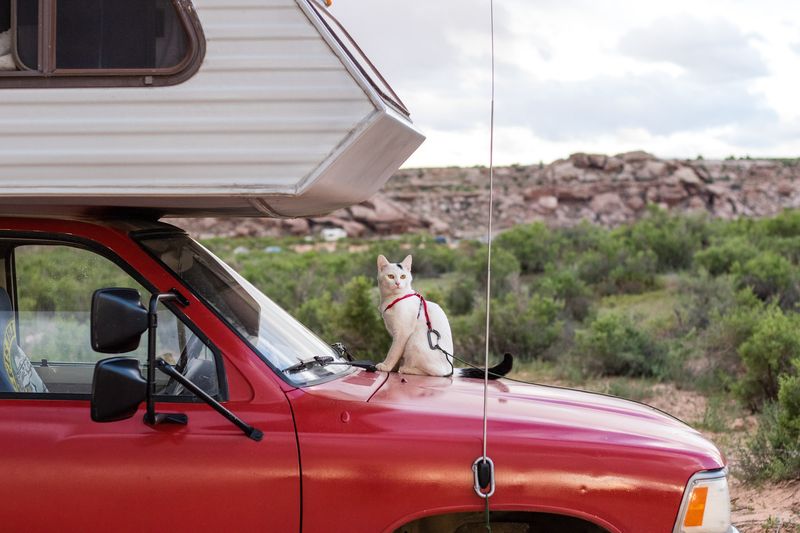📖 Table of Content:
Embarking on an RV adventure with your cat can be a rewarding experience—but it’s not as simple as hitting the road with your feline in tow. Unlike dogs, most cats are territorial creatures who thrive on routine and predictability, making change potentially overwhelming. That’s why introducing them to RV life requires more than just packing their food and water bowls—it takes intention, preparation, and lots of patience.
Whether you’re planning a short weekend getaway or transitioning to full-time RV living, your cat’s comfort and security should be at the top of your checklist. A smooth adjustment begins with creating a space that mirrors their sense of home, along with gradually familiarizing them with the sights, sounds, and sensations of life on wheels. Each essential you bring along should serve a purpose in helping them feel safe and in control of their environment.
This guide outlines nine carefully selected items and strategies that combine both practicality and emotional support for your cat. From the carrier they travel in to the enrichment activities that keep them happy, each piece plays a role in making RV travel enjoyable—for both of you.
1. Comfortable, Familiar Carrier
A trusted carrier is more than a transport tool—it’s your cat’s mobile sanctuary. Ideally, this should be the same carrier your cat has used for vet visits or past travels, as the scent and structure offer comfort in unfamiliar settings. Introduce it at home weeks before departure by leaving it open in a quiet area with cozy bedding inside. Encouraging your cat to nap or play in it voluntarily builds positive associations. You might even try feeding treats or meals near or inside the carrier to reinforce it as a safe zone. In the RV, keep it accessible rather than hidden away, so your cat can retreat to it when feeling overwhelmed. Its familiar smell and structure can anchor your cat emotionally while everything else changes around them.
2. Litter Box Setup
Finding the right place for the litter box in an RV is crucial to avoiding accidents and minimizing stress. Placement should be discreet, away from food and water, but still easily accessible at all times. Make sure to bring the same type of litter your cat is used to, as changes in texture or smell can deter use. Some RVers opt for covered boxes or compact corner models to save space while still offering privacy. It’s helpful to use odor-control litter and clean the box daily to maintain a fresh environment inside the limited space. Avoid sudden shifts in location—even in a small RV—to support your cat’s sense of routine. A stable litter setup can go a long way in helping your cat feel in control.
3. Secure Food and Water Station
Consistency in where and when your cat eats can help normalize the new environment quickly. Use heavy, non-slip bowls or secured feeders to prevent tipping during travel days or sudden stops. Hydration is extra important while traveling, so keep fresh water available at all times and consider a pet water fountain if space allows. Feeding your cat in the same spot daily—even in a mobile home—gives them a sense of structure and control. Try not to switch food brands or types during this period unless absolutely necessary. Store food in airtight containers to preserve freshness and avoid attracting insects. Maintaining mealtime stability will help reduce anxiety and digestive issues.
4. Designated Cozy Zone
Creating a personal space for your cat inside the RV is essential for building a sense of ownership and comfort. Think of it as their safe retreat—a small nook with a soft blanket, familiar toys, and perhaps a window view to watch birds or scenery. The more it smells like them, the better, so don’t wash their blankets before the trip. Some cats prefer vertical spaces, so adding a cat hammock or a shelf-level bed can be a huge win. Place the cozy zone away from noisy appliances or high-traffic areas when possible. Consistency in location helps your cat recognize it as their corner of the world. Over time, they’ll gravitate there on their own when they want rest or reassurance.
5. Harness and Leash Training
Acclimating your cat to a harness and leash opens up opportunities for safe outdoor exploration while traveling. Start training at home several weeks in advance by letting them wear the harness for short, positive sessions. Use treats and gentle encouragement to build their confidence and association with the gear. Never force the leash—let them guide the pace and gradually extend the time outdoors. Always supervise outdoor time to prevent escapes or encounters with wildlife. Look for calm, quiet spots at campgrounds to practice before moving into busier areas. With patience, harness time can become a fun, enriching part of your cat’s travel experience.
6. Interactive Toys and Enrichment
Mental stimulation is just as important as physical space when traveling in a compact environment. Pack a small selection of your cat’s favorite toys—especially those that encourage independent play, like puzzle feeders or crinkle tunnels. Rotate toys every few days to keep things fresh and exciting. Schedule interactive playtime using feather wands or laser pointers to help burn off energy and bond with your cat. A bored cat is more likely to develop unwanted behaviors like scratching furniture or excessive meowing. Enrichment also helps your cat adjust emotionally by giving them familiar routines. Incorporating new toys gradually can add variety without overwhelming them.
7. Calming Aids
Some cats benefit greatly from calming products during times of transition, especially sensitive or anxious ones. Options like pheromone sprays, diffusers, or calming collars can create a more relaxed atmosphere in the RV. Always introduce these aids before the trip to test their effectiveness and ensure your cat responds positively. Consult your vet about natural supplements or medications if needed for longer journeys or nervous travelers. Look for signs of stress such as hiding, over-grooming, or lack of appetite as cues to try calming aids. Apply sprays near bedding or cozy zones—not directly on your cat—for best results. With the right approach, these tools can ease your cat’s transition dramatically.
8. Routine and Patience
Routine is your best friend when helping your cat settle into new surroundings. Stick to your usual feeding, play, and sleep times as closely as possible, even when you’re in a different place every night. Predictability gives your cat a sense of control in an otherwise unfamiliar world. Allow your cat to explore the RV at their own pace—never force interaction or exploration. Celebrate small wins, like the first time they use the litter box or nap in their cozy zone. Speak softly and avoid sudden noises, especially in the early days of adjustment. The more calm and consistent you are, the more reassured your cat will feel.
9. Health Records and Emergency Plan
Planning ahead for emergencies can save you both stress and potential danger on the road. Keep a physical or digital copy of your cat’s vaccination records, microchip info, and recent vet history readily available. Research and note down nearby veterinary clinics along your travel route in advance. A pet-specific first aid kit should include items like tweezers, gauze, antiseptic wipes, and any prescribed medications. Consider getting a GPS tag for your cat’s collar in case of an escape. Always have a recent photo on hand to help locate them quickly if needed. With a well-prepared plan, you can handle unexpected situations with greater confidence.
